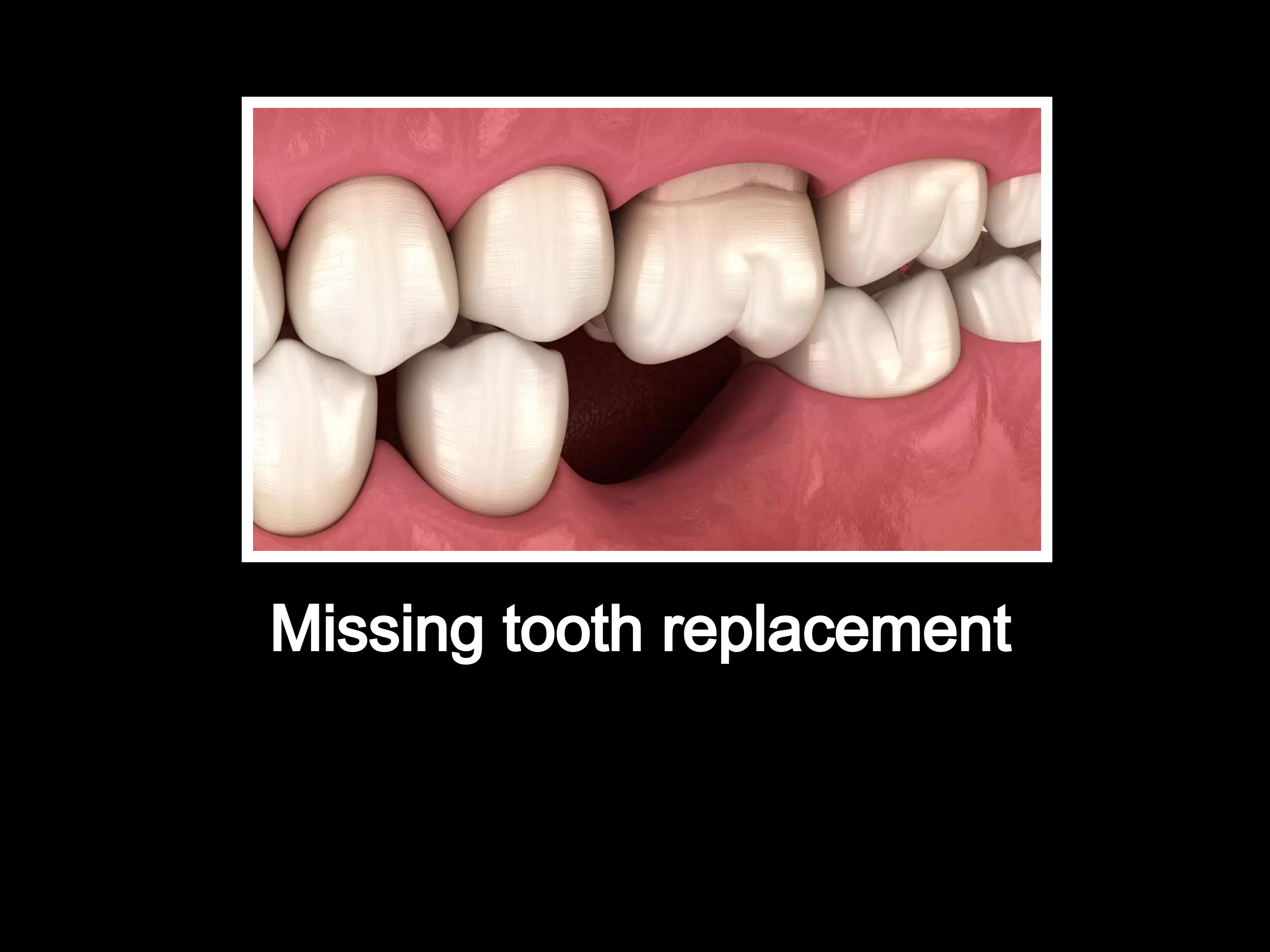
Missing tooth replacement options, How to replace a fallen tooth ?
There are several options for replacing a missing tooth, depending on factors such as your dental health, budget, and personal preferences. Here are some common options:
1 - Dental Implants: A dental implant is a titanium post surgically inserted into the jawbone to replace the missing tooth root. Once the implant integrates with the bone, a crown is placed on top to mimic the appearance and function of a natural tooth. Dental implants are highly durable and provide a long-term solution for tooth replacement.
2 - Dental Bridges: A dental bridge consists of one or more artificial teeth (pontics) anchored to neighboring natural teeth or dental implants. The adjacent teeth are typically capped with dental crowns to support the bridge. Bridges can be an effective solution for replacing one or more adjacent missing teeth.
3 - Removable Dentures: Removable dentures are prosthetic devices that replace multiple missing teeth. They can be either partial (replacing some teeth) or complete (replacing all teeth). Removable dentures can restore chewing function and improve aesthetics but may require adjustments and periodic replacements.
4 - Resin-Bonded Bridge (Maryland Bridge): This type of bridge involves bonding a pontic tooth to the adjacent natural teeth with metal or porcelain wings. It's a less invasive option than traditional bridges because it doesn't require extensive tooth preparation, but it may not be suitable for all cases.
5 - Flipper: A flipper is a temporary, removable partial denture used to replace a single missing tooth. It's typically made of acrylic and includes a false tooth attached to a retainer that clips onto adjacent teeth. Flippers are often used as interim solutions while awaiting a permanent restoration like an implant or bridge.
6 - Cantilever Bridge: Similar to traditional bridges, a cantilever bridge uses adjacent teeth for support, but it only requires one natural tooth to anchor the pontic. This can be a suitable option when there's only one adjacent tooth available for support.
7 - All-on-4 or All-on-6 Implants: These are implant-supported prosthetic solutions used for full-arch tooth replacement. They involve the placement of four or six implants per arch, onto which a fixed denture or bridge is attached. All-on-4 and All-on-6 implants offer a more stable and natural-feeling alternative to traditional dentures.
It's important to consult with a dentist or prosthodontist to determine the best option for your specific needs and circumstances. They can evaluate your oral health, discuss your treatment goals, and recommend the most suitable treatment plan for you.
Treatments

Dental Dentures
Removable dentures are prosthetic devices that replace multiple missing teeth. They can be either partial (replacing some teeth) or complete (replacing all teeth). Removable dentures can restore chewing function and improve aesthetics but may require adjustments and periodic replacements.

Dental Bridges
A dental bridge consists of one or more artificial teeth (pontics) anchored to neighboring natural teeth or dental implants. The adjacent teeth are typically capped with dental crowns to support the bridge. Bridges can be an effective solution for replacing one or more adjacent missing teeth.

Dental Implants
A dental implant is a titanium post surgically inserted into the jawbone to replace the missing tooth root. Once the implant integrates with the bone, a crown is placed on top to mimic the appearance and function of a natural tooth. Dental implants are highly durable and provide a long-term solution for tooth replacement.